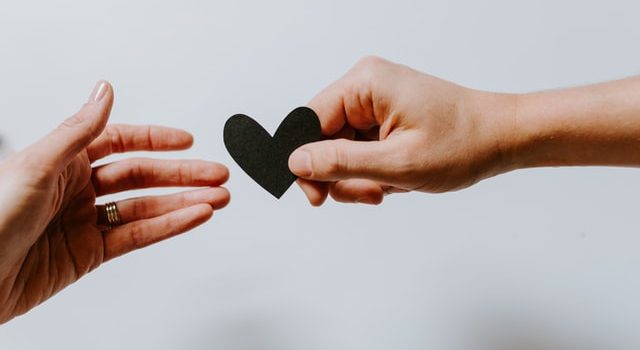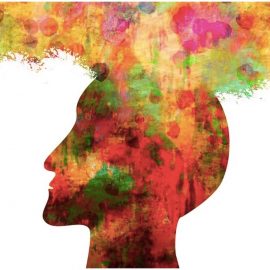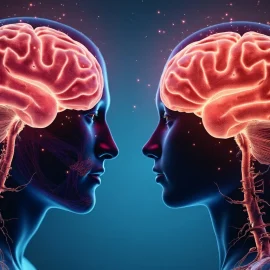

This article is an excerpt from the Shortform book guide to "Not Nice" by Aziz Gazipura. Shortform has the world's best summaries and analyses of books you should be reading.
Like this article? Sign up for a free trial here.
What does it mean to be nice? Is it important to be nice to others?
According to Not Nice by Aziz Gazipura, we’re raised to believe that it’s important to be nice. Parents, teachers, and other adults consistently remind children to be polite and follow the rules, but Gazipura claims it’s not about being good at all.
Keep reading to learn the true reason why people act nice.
The True Meaning of Being Nice
While the reasons to be nice are well-intentioned, young people often inadvertently learn that anything that doesn’t meet adult expectations of niceness is bad. They become afraid of doing anything that displeases people in their lives, whether that be openly disagreeing with them or being too loud. We carry these lessons with us into adulthood, holding on to the belief that being nice is the equivalent of being good.
(Shortform note: Behavioral expectations can vary by gender, with girls more often raised to be nice. For instance, girls are often encouraged to be kind and helpful, while boys are commonly commended for being strong and independent. This expectation of being nice persists as girls mature: A 2017 Pew Research Study revealed that Americans deemed nurturing and empathy the most crucial qualities for women, whereas they prioritized honesty, morality, and professional success for men.)
So, what does it mean to be nice? According to Gazipura, being nice isn’t about being good at all. He explains that niceness doesn’t stem from our desire to take care of others or be kind but from a fear of rejection. Niceness is simply a set of rules we believe are necessary to earn affection and avoid rejection. (Shortform note: Evolutionary psychology suggests the fear of rejection isn’t a personality flaw but an innate human trait. Throughout much of human history, social exclusion could mean death. As a result, socially acceptable behaviors, such as being nice, weren’t just strategic ways to ensure inclusion, earn affection, and avoid rejection—they were an evolutionary imperative.)
What Does Nice Look Like?
In this section, we’ll explain what nice looks like in action and the rules people believe they have to follow to be nice.
According to Gazipura, the rules of niceness are simple:
- Don’t do anything that will make people dislike you.
- Don’t hurt anyone’s feelings.
- Don’t get angry or make anyone else angry.
(Shortform note: The notion of what constitutes nice is deeply embedded in cultural norms and practices, which discourages a shared universal definition of what it means to be nice. That being said, Gazipura’s rules transcend cultural specificity because instead of focusing on specific behaviors, the rules he highlights emphasize the importance of not triggering any negative emotions in others, regardless of the behavior.)
Gazipura says that in an effort to follow the rules, nice people often exhibit the following qualities: the need to be liked, amplified guilt, and a fear of conflict.
Quality #1: The Need to Be Liked
The first quality of niceness is the need to be liked. Gazipura acknowledges that everyone likes to be liked, but if the desire to be liked becomes a need, then you begin to make decisions based on how you imagine others will respond or react to you. Gazipura calls this type of behavior “approval-seeking,” but it’s more commonly known as “people pleasing.” People pleasers try to avoid judgment and disapproval at all costs and will only do things they imagine will invite a positive response.
(Shortform note: Not everyone agrees that trying to be liked is a problem. Norman Vincent Peale, author of The Power of Positive Thinking, explains that being liked is key to professional and personal success. He encourages people to become what he calls a “comfortable person,” someone whom it’s easy for other people to be around. Peale describes being liked as a skill you can practice starting with self-awareness. If people don’t like you, he suggests looking inward to examine your less-than-attractive personality traits.)
Quality #2: Amplified Guilt
The second aspect of niceness is unnecessary guilt. According to Gazipura, there are two types of guilt: healthy and unhealthy. Healthy guilt occurs when your actions conflict with your values—for example, if you took credit for something at work that you didn’t do. Unhealthy guilt is an excessive, irrational emotional response to perceived wrongdoing, leading to persistent self-blame, unworthiness, and regret. For example, you might experience unhealthy guilt if you declined an invitation to a friend’s baby shower, and they felt disappointed, even if your decision was reasonable. Gazipura explains that nice people often take on unnecessary responsibility for others’ feelings and, as a result, feel unhealthy guilt when someone is upset or hurt.
(Shortform note: Gazipura’s discussion of unhealthy guilt aligns with Brené Brown’s definition of shame, where individuals feel unworthy and inadequate, and engage in persistent self-blame and self-judgment. In The Power of Vulnerability, Brown emphasizes a distinction between guilt and shame that’s pivotal in understanding these emotional nuances: Guilt is a response to an action (“I did something bad”), inviting reflection and possible reparation, whereas shame is a belief about our being (“I am bad”). While Gazipura argues you can avoid feelings of shame by releasing your attachment to being nice, Brown argues that empathy is the antidote to shame.)
Quality #3: Fear of Conflict
The final quality of niceness is a fear of conflict and anger. Gazipura writes that growing up, many of us learn that anger can be dangerous because it might harm someone we love or provoke their anger. Most importantly, we worry that any form of conflict will harm a relationship we value. This fear results in conflict avoidance.
(Shortform note: Conflict avoidance often emerges as a characteristic of insecure attachment, a relational pattern characterized by difficulty forming and maintaining healthy, emotionally fulfilling connections. People who are insecurely attached tend to avoid conflicts to protect themselves from emotional vulnerability and maintain a sense of control. This avoidance, while seemingly protective, can hinder effective communication and problem-solving in relationships, ultimately undermining the quality of their connections with others.)
These three qualities of niceness highlight one of Gazipura’s main arguments. Being nice isn’t about the desire to take care of or help other people; it’s about you and your desire to avoid discomfort.
(Shortform note: In reconsidering the definition of nice, it can be helpful to highlight the difference between being nice and being kind. The Markkula Center for Applied Ethics suggests that while both terms are often used interchangeably, they have distinct meanings: “Nice” refers to actions that are pleasing or agreeable, while “kind” refers to actions that come from a place of authentic benevolence and consideration for others. This suggests that while being nice is about keeping the peace, kindness is rooted in genuine care.)

———End of Preview———
Like what you just read? Read the rest of the world's best book summary and analysis of Aziz Gazipura's "Not Nice" at Shortform.
Here's what you'll find in our full Not Nice summary:
- Why there's a cultural fixation on niceness
- How individuals and society would benefit from being less nice
- How to break free from the people-pleasing trap and empower yourself






